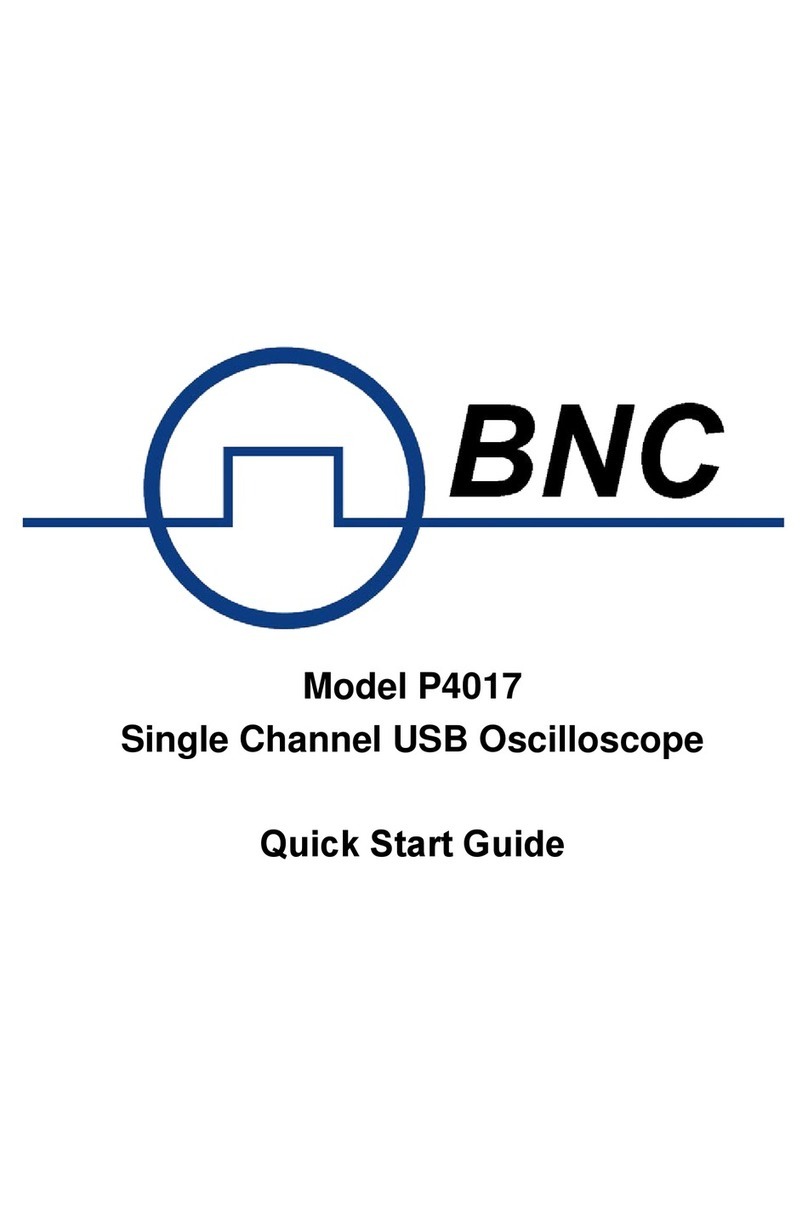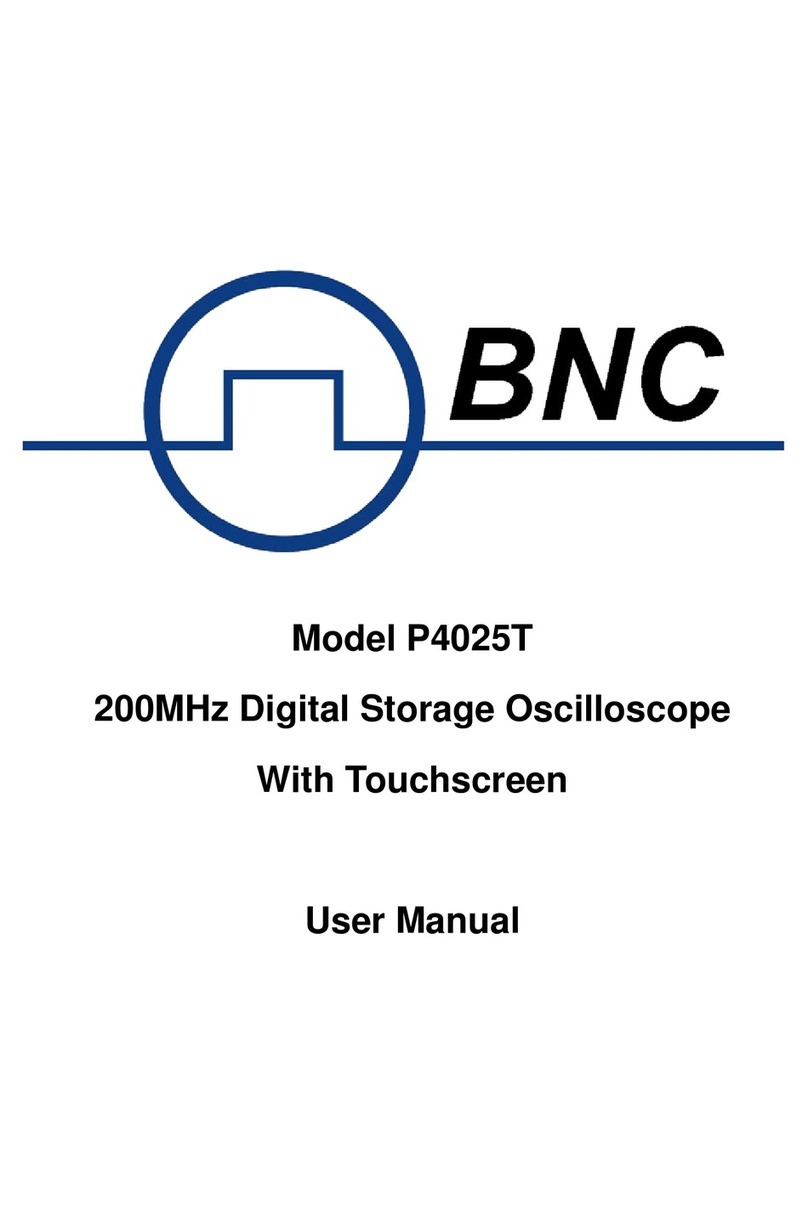
BNC Model P2016 Handheld DSO & DMM Contents
Berkeley Nucleonics Corporation
info@berkeleynucleonics.com | www.berkeleynucleonics.com
2955 Kerner Blvd, San Rafael, CA 94901 | 800-234-7858
6.11 Freezing the Screen ···············································································24
6.12 Using Average for Smoothing Waveforms ················································25
6.13 Using Persistence to Display Waveforms··················································25
6.14 Using Peak Detection to Display Glitches ·················································26
6.15 Selecting AC-coupling············································································27
6.16 Reversing the Polarity of the Displayed Waveform·····································28
6.17 Using Waveform Mathematics Functions··················································29
6.18 Use USB mass storage device to save waveform data·······································30
7. USING THE MULTIMETER ············································ 35
7.1 About this Chapter···················································································35
7.2 Making Meter Connections ·······································································35
7.3 Multimeter Operation Window···································································35
7.4 Making Multimeter Measurements ·····························································36
7.4.1 Measuring Resistance Values·································································37
7.4.2 Measuring Diode ·················································································37
7.4.3 On-off Test··························································································38
7.4.4 Measuring Capacitance·········································································38
7.4.5 Measuring DC Voltage··········································································39
7.4.6 Measuring AC Voltage ··········································································40
7.4.7 Measuring DC Current··········································································41
7.4.8 Measuring AC Current ··········································································42
7.5 Freezing the Readings··············································································43
7.6 Taking a Relative Measurement·································································44
7.7 Selecting Automatic/ManualRange Adjustment···········································45
8. ADVANCED FUNCTION OF OSCILLOSCOPE ·················· 47
8.1 About this Chapter···················································································47
8.2 Setting the Vertical CH1 and CH2·······························································47
8.2.1 Setting the Channel Coupling·································································48
8.2.2 Open and Close Settings on Channel ······················································49
8.2.3 Setting the probe attenuation ·································································49
8.2.4 Setting of Inverted Waveform ·································································50
8.3 Make the Math Function Menu Setting························································50
8.4 Setting the Trigger System········································································51
8.5 Triggering Control ···················································································52
8.5.1 Edge Trigger·······················································································52
8.5.2 Video Trigger ······················································································54
8.5.3 Alternate Trigger··················································································55
8.6 Setting the Acquiring Mode·······································································58
8.7 Display Setting························································································59
8.7.1 Display Style·······················································································59






























